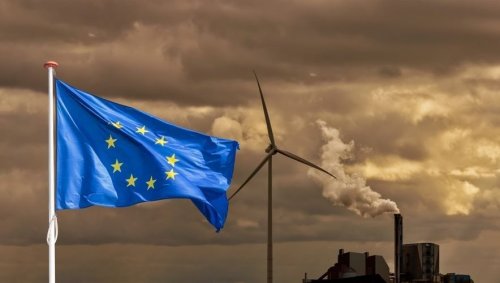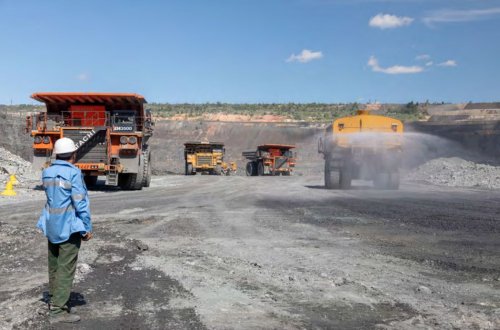The Joint Stock Company “Decarbonization Fund of Ukraine” will provide financial leasing services for condominium associations and housing cooperatives for energy efficiency measures.
This product, Financial Leasing for Condominiums, was presented on May 7 by 3 government agencies dealing with energy efficiency, energy saving and decarbonization in Ukraine:
- State Agency on Energy Efficiency and Energy Saving of Ukraine;
- JSC “Decarbonization Fund of Ukraine”;
- state Institution “Energy Efficiency Fund”.
The event was broadcast on the Facebook page of the State Agency on Energy Efficiency and Energy Saving.
EcoPolitic analyzed whether this product is really related to decarbonization.
What is the essence of the proposed program?
The financial leasing mechanism envisages that condominiums and housing cooperatives will lease heat pumps and solar power plants for their own needs with the possibility of their further purchase. The Decarbonization Fund will buy this equipment from the manufacturer and then transfer it to the communities of the buildings. Therefore, residents will pay for this property with the joint-stock company, not the manufacturer.
The Energy Efficiency Fund will also provide 50% of the project funding in the form of a grant.
Can the installation of such equipment be considered a measure that reduces the negative impact on the environment due to greenhouse gas emissions? Yes. This is confirmed by the words of the Head of the State Agency on Energy Efficiency and Energy Saving, Hanna Zamazeyeva:
“One house that installs renewable energy sources will reduce CO2 emissions by 20-30 tons annually,” she said.
Can this be considered decarbonization measures? According to the Cambridge Dictionary, “decarbonization is the process of stopping or reducing the emission of carbon gases, especially carbon dioxide, into the atmosphere as a result of a process, such as the burning of fossil fuels.” In other words, we see a certain substitution of concepts, because a residential building is not a source of emissions.
How rational is the spending of funds on such projects?
Of course, Ukraine should try to reduce CO2 emissions in various areas. But how reasonable is it to invest the already very limited financial resources in the implementation of measures that will have very little effect? And how much more relevant is this than the decarbonization of large metallurgical enterprises or cement and electricity producers, which will face the need to pay a carbon duty under the Carbon Based Import Adjustment Mechanism (CBAM) starting in early 2026 and which need to decarbonize in order to survive and keep the Ukrainian economy afloat?
As a reminder, currently the only budget program used by the Decarbonization Fund is the State Fund for Decarbonization and Energy Efficient Transformation. It is funded by an environmental tax, the lion's share of which is paid by large industrial enterprises.
On May 7, it became known that the State Fund for Decarbonization and Energy Efficient Transformation will also be the only budgetary source of support for enterprises in implementing the best available technologies and management methods (BATM).
Against this background, it looks even stranger to spend the funds of this budget program on the implementation of energy efficiency measures in buildings. And the question arises: will there be any funds left for those who actually fill this budget program?
What are the risks of such a direction of funds?
Currently, there is a real threat that European partners will not want to cooperate with the Decarbonization Fund, as it spends money on projects that are not directly related to decarbonization and those that are not very effective.
If we look at the European Union's approach to decarbonization, we see that Directive 2003/87/EC establishing a system for the trading of greenhouse gas emission allowances (EU ETS) within the EU stipulates that Member States should use at least 50% of EU ETS revenues for climate change and energy-related purposes. In practice, on average, member states have allocated 74.4% of their emissions revenues to climate-related goals.
The EU has several instruments of public financing for the green transition and decarbonization. For example, the EU ETS revenues fully fund the work of two of them – the Innovation Fund and the Modernization Fund with a total budget of €87 billion. These funds are designed to provide financing for decarbonization projects during Phase 4 (2021-2030).
Ukraine should follow the European experience and have a separate fund that will deal exclusively with the decarbonization of industrial enterprises. Turning the only existing specialized fund into an institution that finances housing and communal services instead of the green transition looks at least inappropriate. Therefore, it is necessary to either create a new specialized fund or narrow the focus of projects that receive preferential lending from the Decarbonization Fund.
In early April, EcoPolitic wrote that in the first quarter of 2025, the Decarbonization Fund of Ukraine issued almost three times fewer loans and for half the amount than in the last quarter of 2024.





